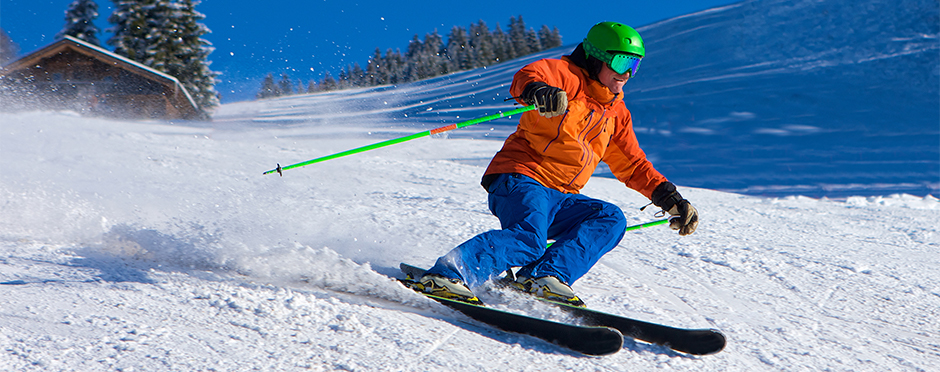
Tips for Preventing Common Skiing Injuries
Leave a CommentSkiing is a popular outdoor winter activity that we tend to hear a lot about during the Winter Olympic Games. With the Winter Olympics occurring in PyeongChang this year, it is expected that the skiing will be making headlines in the coming weeks – from discussing amazing performances to unpredictable injuries.
Although skiing is a sport where lower body injuries are more common, upper body injuries can occur as well. Read below to learn about five common injuries that downhill skiers should be aware of, as well as tips to prevent these injuries from occurring.
ACL Tears
Most anterior cruciate ligament (ACL) tears occur from a non-contact knee injury, meaning the tear occurs when the knee is in poor positioning, not by the knee being hit or fallen on. In skiing, ACL tears can occur due to landing a jump in poor form with the weight too far back or when a skier tries to prevent a fall. Skiers who are falling should try to let the fall happen as safely as possible rather than trying to fight it to stand up. Trying to prevent a fall could result in twisting the torso in relation to the lower half, which may lead to knee twisting. This is when the ACL can tear.
MCL Injury
The medial collateral ligament (MCL) is on the inside of the knee. It is often injured or torn when the skier falls after trying to slow or stop by using the ski tips pointed toward one another in the snowplow position. MCL injuries are more common in beginner and intermediate skiers. Tips to decrease risk of MCL injury include making sure weight is balanced when in the snowplow position and staying on runs that are a comfortable challenge but not too advanced for the skier’s skillset.
AC Sprain
An acromioclavicular (AC) joint sprain is an injury to the ligament that holds the AC joint together at the top of the shoulder. Injury to this area is usually caused by a fall onto an outstretched arm. Skiers can decrease the risk of this type of injury by pulling arms toward the body should a fall occur, rather than trying to catch themselves on an outstretched arm.
Clavicle Fracture
Another injury that can occur when falling on the shoulder or outstretched hand is a fractured clavicle. The clavicle is the bone that is commonly called the “collar bone.” The best way to decrease the risk of a clavicle fracture is to decrease the risk of falling by sticking to runs that align with the skier’s skillset.
Thumb Sprain – a.k.a. “Skier’s Thumb”
Skier’s thumb occurs when a skier falls with a pole in hand. This can cause the thumb to overextend and sprains the ligament on the inside portion of the thumb. There are thumb stabilizers available to skiers that need them, otherwise the best way to prevent this injury is to avoid putting hands through the ski pole loops unless absolutely necessary.
Safety First
These are just a few of the injuries that can occur in downhill skiers. Although data shows that women are at a slightly higher risk of knee injuries and men are at a higher risk for shoulder injuries,1 it is important for all skiers to put safety first – especially inexperienced or novice skiers. It is also important to note that there may be a higher incidence of head injuries associated with ski jumping or snowboarding where aerial tricks are being performed. To decrease the risk of head injury, helmets should be worn by all skiers and snowboarders. Should muscle soreness or pain occur after hitting the slopes, make sure to visit the nearest Athletico location for a free assessment.
The Athletico blog is an educational resource written by Athletico employees. Athletico bloggers are licensed professionals who abide by the code of ethics outlined by their respective professional associations. The content published in blog posts represents the opinion of the individual author based on their expertise and experience. The content provided in this blog is for informational purposes only, does not constitute medical advice and should not be relied on for making personal health decisions.
References:
1. Macnab, Andrew J., and Robert Cadman. “Demographics of alpine skiing and snowboarding injury: lessons for prevention programs.” Injury Prevention 2.4 (1996): 286-289.
2. “Tips to Prevent Skiing-Related Knee Injuries.” American Physical Therapy Association, 28 Dec. 2017, www.moveforwardpt.com/Resources/Detail/preventing-skiingrelated-knee-injuries.
